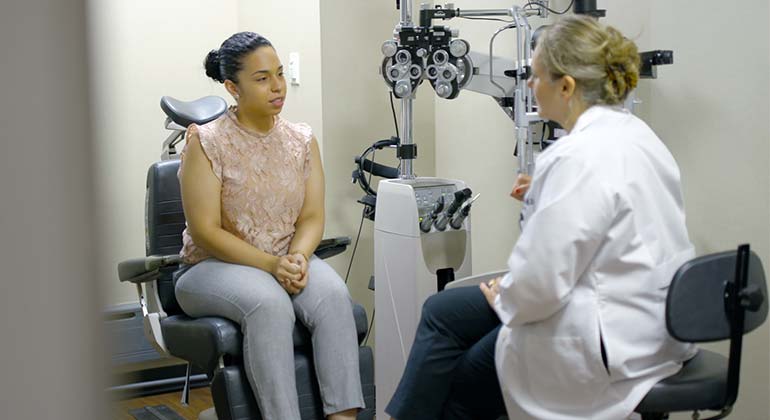The Advantages And Disadvantages of Various Refractive Surgical Treatments for Boosted Eyecare

LASIK Surgical Treatment
LASIK surgery is a commonly performed refractive procedure that intends to deal with vision problems such as farsightedness, astigmatism, and nearsightedness. This medical technique has actually gained appeal because of its performance in giving clients with clearer vision and minimizing their dependency on glasses or contact lenses. During the procedure, a slim flap is developed on the cornea, and a laser is used to reshape the underlying cells, fixing the refractive mistake. The flap is after that repositioned, permitting fast recovery and minimal pain for the person.
One of the main advantages of LASIK surgical procedure is the rapid improvement in vision experienced by many people. It is necessary for individuals considering LASIK surgical procedure to undertake a complete evaluation by an eye treatment expert to determine if they are ideal candidates for the procedure.
PRK Treatment
The PRK procedure, additionally understood as Photorefractive Keratectomy, is a kind of refractive surgery that intends to correct vision problems comparable to LASIK surgery. Unlike LASIK, which includes developing a flap in the cornea, PRK works on the surface layer of the cornea.
Among the advantages of PRK over LASIK is that it gets rid of the threat of flap-related complications considering that no flap is created throughout the surgical procedure. This can be advantageous for people with slim corneas or those involved in get in touch with sporting activities where eye trauma is an opportunity. Nonetheless, the recovery time for PRK is usually much longer contrasted to LASIK, as the outer layer of the cornea needs time to regenerate after the treatment. Regardless of the longer recuperation period, PRK can be an appropriate alternative for people seeking vision correction surgical treatment.
SMILE Surgical Procedure
An innovative refractive surgical treatment method getting popularity in the field of ophthalmology is SMILE Surgical treatment. Tiny Cut Lenticule Removal (SMILE) is a minimally invasive treatment that remedies vision by improving the cornea using a femtosecond laser. Unlike typical LASIK surgical treatment, SMILE Surgery entails developing a little incision in the cornea to remove a lenticule, which leads to less disruption to the corneal framework and possibly quicker recovery times.
Among the main advantages of SMILE Surgery is its capacity to treat myopia (nearsightedness) and astigmatism with high accuracy, causing outstanding aesthetic results for people. The minimally intrusive nature of the treatment also minimizes the danger of complications such as completely dry eye syndrome, making it a favorable alternative for individuals looking for refractive surgical treatment.

LASEK Method
Having actually discovered the benefits and factors to consider of SMILE Surgery, one more notable refractive surgery method worth taking a look at is the LASEK Technique. LASEK, which means Laser-Assisted Subepithelial Keratectomy, is a type of laser eye surgical procedure that intends to fix refractive errors such as myopia (nearsightedness), hyperopia (farsightedness), and astigmatism.
Unlike LASIK, LASEK does not include developing a corneal flap. Rather, throughout a LASEK procedure, the specialist uses a watered down alcohol option to loosen the slim external layer of the cornea, referred to as the epithelium. This layer is then delicately moved aside to allow the laser to improve the underlying corneal tissue. Once the cornea has actually been improved to the desired degree, the epithelial layer is rearranged.
Among the key advantages of LASEK is that it can be suitable for individuals with slim corneas who might not be good candidates for LASIK. In addition, LASEK usually leads to very little post-operative discomfort and a quicker healing time compared to PRK. Nevertheless, the visual healing procedure with LASEK may be somewhat longer than with LASIK.
Implantable Call Lenses
Implantable Contact Lenses offer a long-term vision improvement service for people seeking an alternative to typical contact lenses or glasses. These lenses, also called phakic intraocular lenses, are operatively inserted right into the eye to correct refractive mistakes such as linked here myopia (nearsightedness), hyperopia (farsightedness), and astigmatism. neurologist Andalusia. Unlike typical contact lenses that remain on the surface area of the eye, implantable get in touch with lenses work within the eye itself, supplying clear vision without the requirement for day-to-day maintenance or elimination
One of the vital benefits of implantable call lenses is their durability. When put, they can continue to be in the eye indefinitely, supplying secure and constant vision modification. Additionally, these lenses can be an excellent alternative for people that are not great prospects for laser eye surgery or try this website who prefer a relatively easy to fix vision improvement procedure.
Nevertheless, implantable contact lenses do bring some dangers, consisting of the possibility for cataracts or boosted eye pressure. It is essential for people considering this alternative to talk to an eye care specialist to identify if implantable get in touch with lenses are the right choice for their particular requirements and eye health.
Conclusion
To conclude, each kind of refractive surgical treatment has its own benefits and disadvantages. LASIK surgery is preferred for its fast recovery time, while PRK treatment might be suitable for patients with slim corneas. SMILE surgery supplies marginal pain during the treatment, but LASEK method may have a longer recovery procedure. Implantable get in touch with lenses offer an option for those that are not suitable candidates for typical surgical treatments. Patients need to seek advice from their eye care service provider to figure out the finest alternative for their specific needs.

Overall, SMILE Surgery provides a promising option for people looking to enhance their vision via refractive surgical procedure.